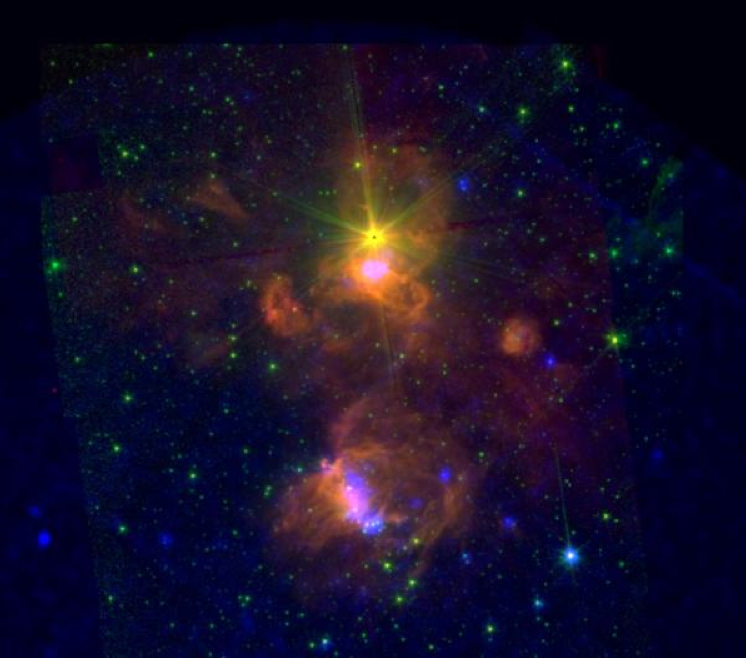
 Credit: L. M. Oskinova, R. A. Gruendl, Spitzer Space Telescope, JPL, NASA and ESA
Credit: L. M. Oskinova, R. A. Gruendl, Spitzer Space Telescope, JPL, NASA and ESA
Busy Being Born, Busy Dying
Star formation is a difficult process to understand. Not only is it hidden
behind large clouds of dense gas and dust (the
raw material out of which stars form) but, since stars interact with their
environment (through radiation, stellar winds and supernovae), the very act of
formation changes the way subsequent generations of stars can form. Astronomers
struggle to understand how individual stars of all masses form, and how the
formation of groups of stars proceeds in time. Which stars form first, and which
follow? A particularly powerful tool in the astronomical arsenal is the
combination of observations in the infrared
and in the X-ray
bands. Infrared radiation helps pinpoint the densest regions of dust heated by
newly-formed stars, while powerful X-ray emission can penetrate even the densest
walls of dust to reveal hidden young active stars. The image above is a
composite of an infrared image (from the Spitzer Space Observatory) and an
X-ray image (from the XMM-Newton
Observatory) of the star forming region known as Berkeley 87. The infrared image, shown in red and green, highlights dense
clouds of dust while the X-ray image (in blue) shows emission from embedded,
hidden stars along with (perhaps) diffuse emission produced by the interplay of
charged particles trapped by magnetic field lines. There's even X-ray emission
from an "old" young star named WR 142 - this star
has run through its nuclear fuel and is probably on the verge of exploding as a
supernova. What will happen to the star forming environment then?
Published: August 2, 2010
<
HEA Dictionary ● Archive
● Search HEAPOW
● Other Languages
● HEAPOW on Facebook
● Download all Images
● Education ● HEAD
>

Each week the HEASARC
brings you new, exciting and beautiful images from X-ray and Gamma ray
astronomy. Check back each week and be sure to check out the HEAPOW archive!
Last modified Tuesday, 27-Feb-2024 10:09:58 EST


